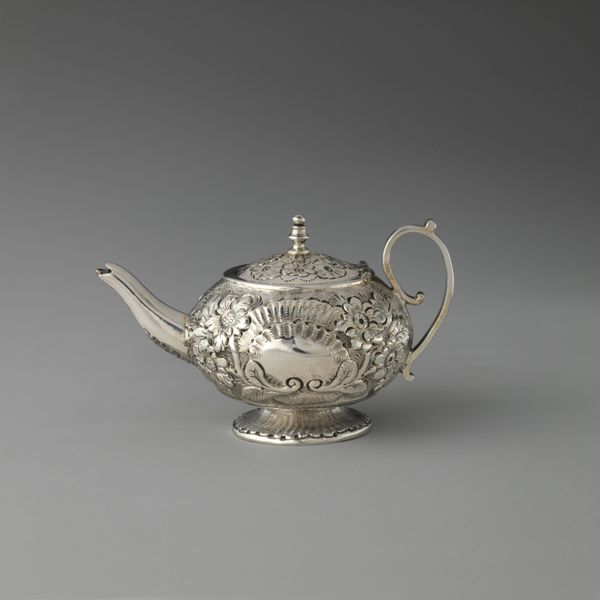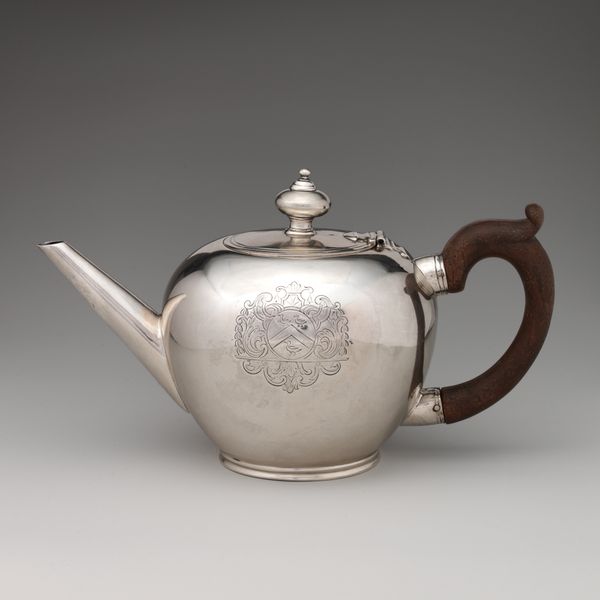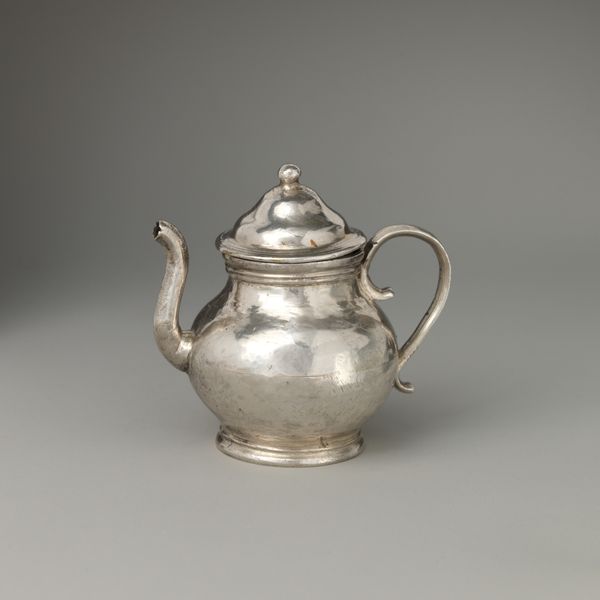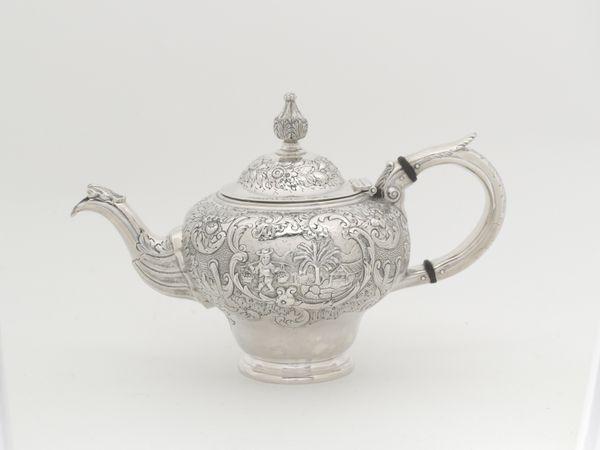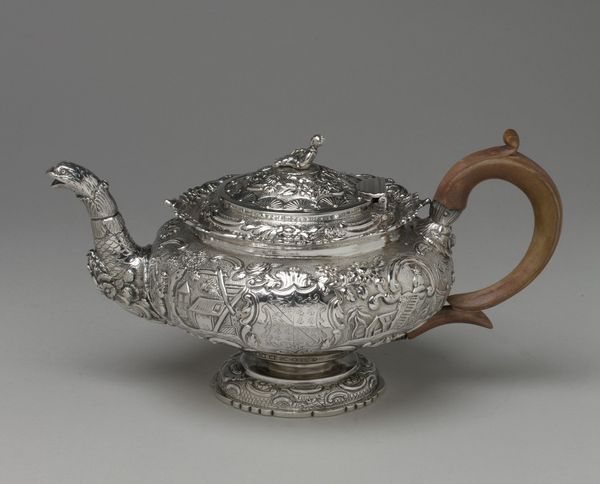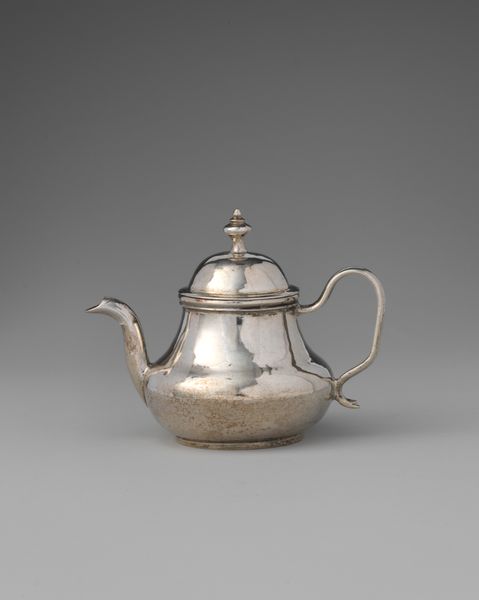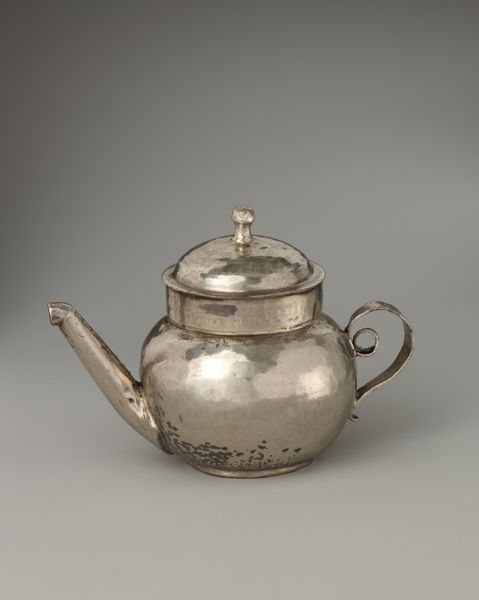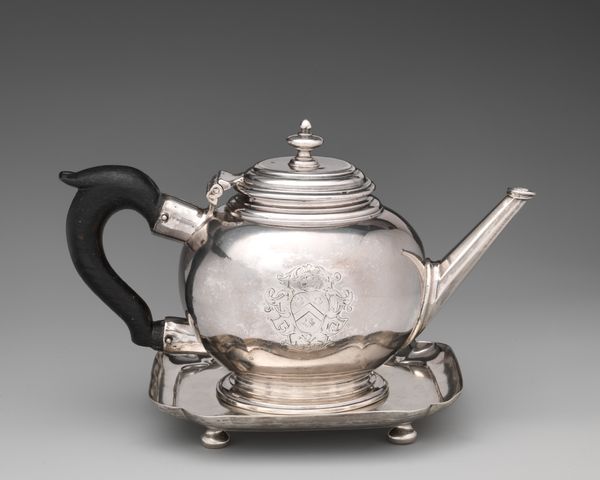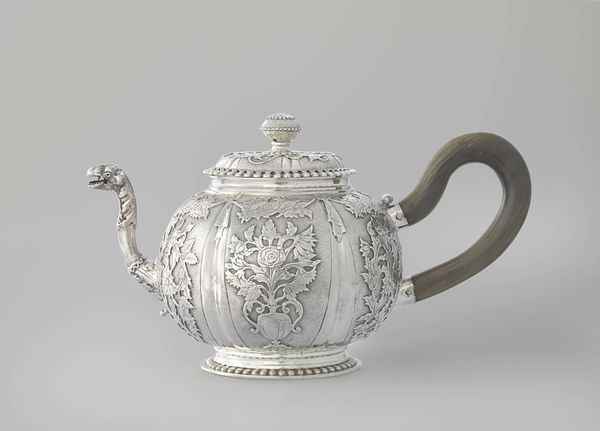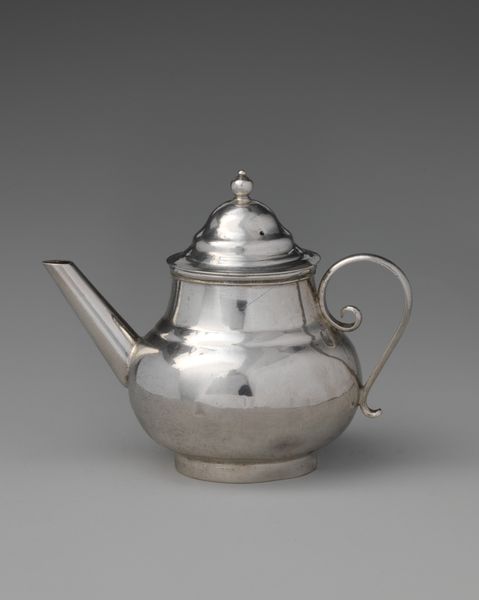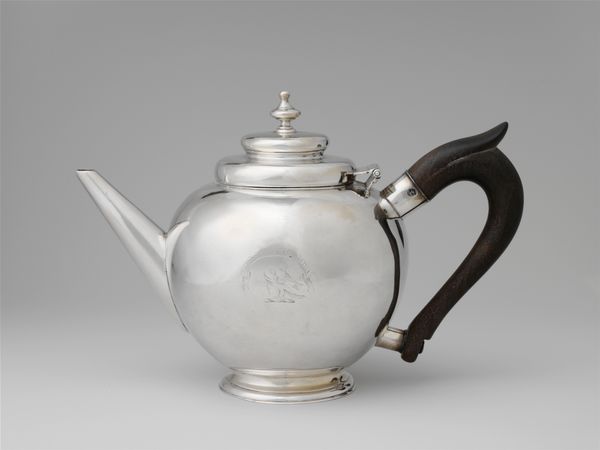
silver, metal, sculpture
#
neoclacissism
#
silver
#
metal
#
sculpture
#
decorative-art
Dimensions: Height: 2 3/4 in. (7 cm)
Copyright: Public Domain
Curator: This exquisite Miniature Teapot, crafted by John Troby around 1805, embodies the Neoclassical style prevalent in decorative arts. Made from silver and other metals, this piece is currently held at the Metropolitan Museum of Art. Editor: My first impression is the intricate balance between functionality and ornate detailing. The polished silver juxtaposes elegantly with the creamy handle; it has an intriguing, compact presence. Curator: The creation of silver objects like this one needs to be situated in a broader framework. For example, the rise of tea culture in the late 18th and early 19th centuries reflects evolving social dynamics, particularly the expanding role of women in domestic spaces and social rituals of that period. Editor: Focusing on the material qualities, note the smooth curvature of the handle against the body's faceted design; this produces both contrast and visual unity. The floral patterns swirling around what seems to be an engraved crest demonstrate exquisite craftsmanship. The knob on top follows through with the circular forms found throughout the work, securing the design. Curator: Precisely, it is crucial to think about the symbolic implications behind each feature—the selection of silver perhaps aimed at displaying wealth and prestige amidst an evolving socio-economic environment influenced by colonialism. Moreover, the Neoclassical forms represent both refined taste and political alignments present in those times. Editor: Viewing it through a semiotic lens, the floral motifs and overall structure seem to reference the idealized forms present in nature and classical architecture. There is harmony in proportion and careful manipulation of line and form, all synthesized masterfully by Troby. Curator: I am left considering the piece within a broader societal structure: Whose labor afforded it the possibility of it even existing and whose lives does the object reflect? Editor: From a formal point of view, the beauty comes through visual language—an engaging experience brought about by observing forms, balance, and textures in refined harmony.
Comments
No comments
Be the first to comment and join the conversation on the ultimate creative platform.
